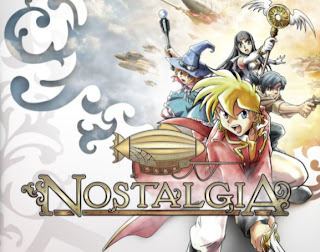Today I was reading the second book in the Hunger Games series, Catching Fire, of which I had just begun reading yesterday. I was sitting on a subway train on the way to my internship, making the daily trek that was once consumed by my 3DS. But recently I have had an awkward desire for wanting to read on the train, as I feel Kid Icarus is better left home where I can fully pay attention to the quirky writing and dialogue.
 A particular passage crosses my eyes, near the beginning of the book,
where one of the characters is kissed by another. The way it was written and
the way I imagined it made me blush, if just a bit. I looked up at that moment
recognizing my face may have turned a shade of pink, but I didn’t do it because
I was worried someone may have noticed. Well, actually, an older gentlemen
sitting across from me was staring at me and likely noticed the slight smile
coming from my face. But the smile wasn’t because of the novel or the kiss
these two characters just shared; it was because I suddenly felt Final Fantasy
VIII enter my consciousness.
A particular passage crosses my eyes, near the beginning of the book,
where one of the characters is kissed by another. The way it was written and
the way I imagined it made me blush, if just a bit. I looked up at that moment
recognizing my face may have turned a shade of pink, but I didn’t do it because
I was worried someone may have noticed. Well, actually, an older gentlemen
sitting across from me was staring at me and likely noticed the slight smile
coming from my face. But the smile wasn’t because of the novel or the kiss
these two characters just shared; it was because I suddenly felt Final Fantasy
VIII enter my consciousness.
Now I know what you’re thinking. What in the hell does FFVIII have anything to do with the Hunger Games? It doesn’t. It has nothing to do with the series at all. But the emotional moment in the novel instantly grabbed some nostalgic feeling from my past and immediately I was thinking of the story in FFVIII.
But there was more to it than this. It wasn’t just a flash or a simple thought, it was a flooding of what my memory remembers from the near beginnings of that game. Of Squall and Rinoa dancing, of the Balamb ships leaving and crossing the water as you see the moon in its reflection. But another thought was dominating my mind, intrusive but welcome all the same. My voice in my head made a statement:
This is the reason I have lost the will to devote the time that I used to put into video games.
To me, I instantly recognized what I was feeling and thinking. The last time I played FFVIII was at least 10 years ago. Not yet a teenager, I had no sense of romance or what those feelings entailed. I was able to absorb whatever was in front of me and accept it as more than just entertainment, influencing me and showing me what love is. I was young, immature, not exactly realizing that the characters and story of Final Fantasy VIII were fabricated to be entertainment and give me an experience that I would enjoy. To me it was an engagement with Squall and Rinoa, and the world around them that pushed them together or pulled them apart. This is what I remember and cherish about this game, and why I feel so nostalgic for it.
It seems the studies have piled over the last few years for why we as gamers tend to grow out of playing video games like we used to. There’s always this nostalgic undertone about it that’s kind of sad: “When I was younger I simply had more time to play. I’m older now with more responsibilities so I can’t play video games as often.” Sure, that may be true, and this has certainly happened to me as well. But sitting on the train, reading this particular passage in a novel that is quite different from Final Fantasy, I realized what the true issue is.

Story. But that’s half of it. The other half is how I’ve grown and lost the ability to be tricked into believing that the fantasy in front of me is reality. Final Fantasy VIII was real for me, just as the characters and setting and plot in Catching Fire feels real to me right now. I know The Hunger Games is fiction and meant to be devoured as entertainment but I can’t shake the feeling that these characters and events remind me of how I used to feel when I was younger. The story encapsulates my mind and brings it all to life, just like 10 years ago when Squall and Rinoa were dancing to Waltz for the Moon.
These words can’t describe how quickly and rushed this realization came into my mind. I know it doesn’t hold true for everyone, and for a large chunk of people they don’t play as often because of time constraints. But for me it’s more than that. It’s the fact that I’ve grown and experienced life to the point where the stories I once knew and still seek just don’t feel the same. I can’t be as easily fooled like I once was. And for that, I now feel that nostalgic feeling that makes me yearn for another game that can trick me into fantasy. But for now, I will remain content with the writing in a Hunger Games novel that so effectively brings me into its built world of fantastic imagination… even if it is only realized entertainment.
-Jared Cyhowski






















